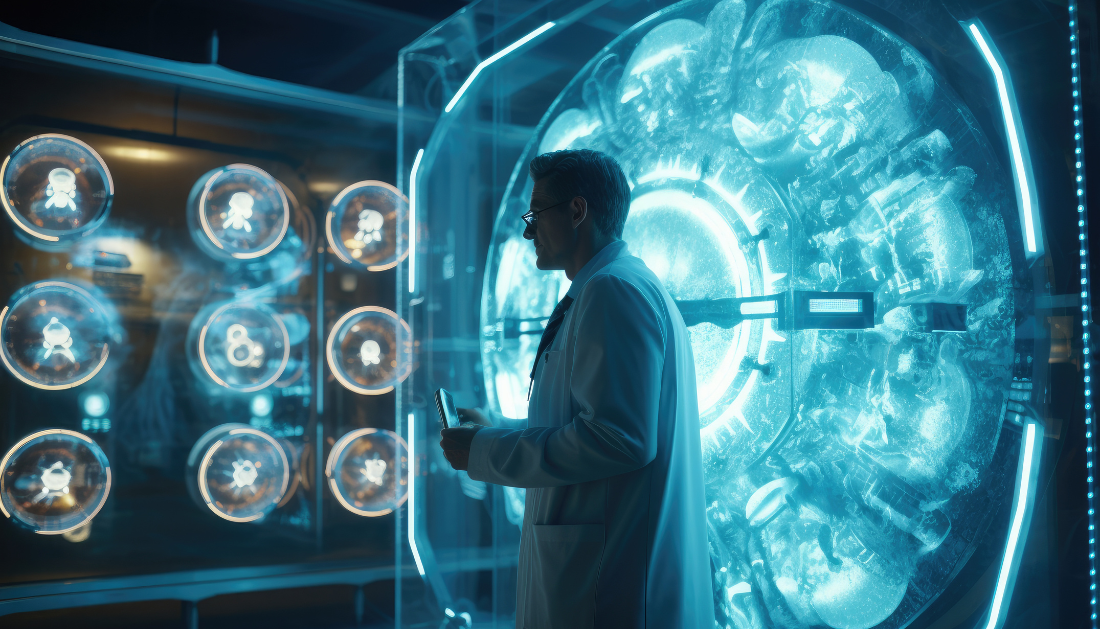

The Department of Energy has granted a sizable funding to Keck Graduate Institute (KGI), a component of The Claremont Colleges, to study the effects of low-dose radiation on people. The study will improve society’s knowledge of the short- and long-term consequences of radiation exposure, whether through occupational exposure or through standard cancer therapies. The grant, named “AI-facilitated assessment of exosome-mediated bystander effects of low-dose ionizing radiation,” will start in September and run for three years, totaling $750,000. The same amount was given to Los Alamos National Laboratory, which will collaborate with KGI on the project.
Professor of systems biology and genomics Animesh Ray, the project’s principal investigator, has been at KGI since 2001. His team uses artificial intelligence to investigate the effects of low-dose radiation on humans. The ultimate objective is that this work may contribute to the development of a policy standard for the acceptable upper limit of low-level radiation exposure.
“Many people are exposed to radiation in their work. This runs the gamut from people who work with nuclear reactors to pilots to those who work with X-rays and, of course, disasters such as Three Mile Island and Chornobyl. Strangely, we have seen that low radiation doses can have a stronger negative effect on health than predicted from models based on higher radiation doses. This is a mystery we are delving into.”- Animesh Ray, Professor, Systems Biology and Genomic, Keck Graduate Institute
Ray and his group, for instance, are curious on how low-dose radiation affects cancer treatment.
“Research shows that if you expose a single cell to radiation, its effect travels outside the cell. The irradiated cells can influence normal cells not exposed to radiation, and sometimes these unirradiated cells even respond as if the cell was directly hit by the radiation,” Ray says. “The DNA gets modified and damaged from this. Although sometimes it can be repaired properly, other times it can die or mutate to potentially cause cancer. Then, while trying to remove the cancer with radiation, it could make new cancer. We call this the bystander effect, where unirradiated cells getting information from irradiated cells may produce these negative effects. This is what we want to study.”
KGI’s project partner, Los Alamos National Laboratory, under the direction of Dr. Kumkum Ganguly, leads a team of scientists that will generate the irradiation cells that will be used in single-cell RNA sequence analysis study by KGI’s research team.
The KGI team, which consists of postdoctoral researchers and current students, will use cutting-edge artificial intelligence methods to examine the data.
“The grant is not for solving a problem but for understanding a problem,” Animesh says. “The standard for the amount of radiation people can be exposed to came from studies done decades ago, but the work to figure out how low dose radiation produces biological effects has been difficult and long overdue since the human genome revolution began.”
Source Link: Keck Graduate Institute
more recommended stories
 E-Cigarette Use and Heart Attack Risk in Former Smokers
E-Cigarette Use and Heart Attack Risk in Former SmokersKey Takeaways for Clinicians and Nurses.
 36-Week Pre-eclampsia Screening May Reduce Term Risk
36-Week Pre-eclampsia Screening May Reduce Term RiskA New Preventive Strategy for Term.
 Cardiovascular Risk and Sudden Cardiac Death in Diabetes
Cardiovascular Risk and Sudden Cardiac Death in DiabetesRising Sudden Cardiac Death (SCD) Risk.
 Poor Kidney Function and Alzheimer’s Biomarkers Explained
Poor Kidney Function and Alzheimer’s Biomarkers ExplainedPoor kidney function may influence levels.
 Walking Speed Before Hip Replacement Predicts Recovery
Walking Speed Before Hip Replacement Predicts RecoveryNew Evidence Points to a Simple,.
 Neuroblastoma Drug Combo Extends Survival in Models
Neuroblastoma Drug Combo Extends Survival in ModelsA Promising Shift in High-Risk Neuroblastoma.
 How Soybean Oil Impacts Weight Gain and Metabolism
How Soybean Oil Impacts Weight Gain and MetabolismWhy Soybean Oil May Affect Metabolism.
 Coffee and Cognitive Function: Evidence Review
Coffee and Cognitive Function: Evidence ReviewA new narrative review in Cureus.
 Colorectal Cancer Screening Rates Low in Adults 45–49
Colorectal Cancer Screening Rates Low in Adults 45–49Recent UCLA research reveals that colorectal.
 Gut Immune Cells and Long-Lasting Antiviral Protection.
Gut Immune Cells and Long-Lasting Antiviral Protection.Breakthrough Findings on How Gut Immune.

Leave a Comment